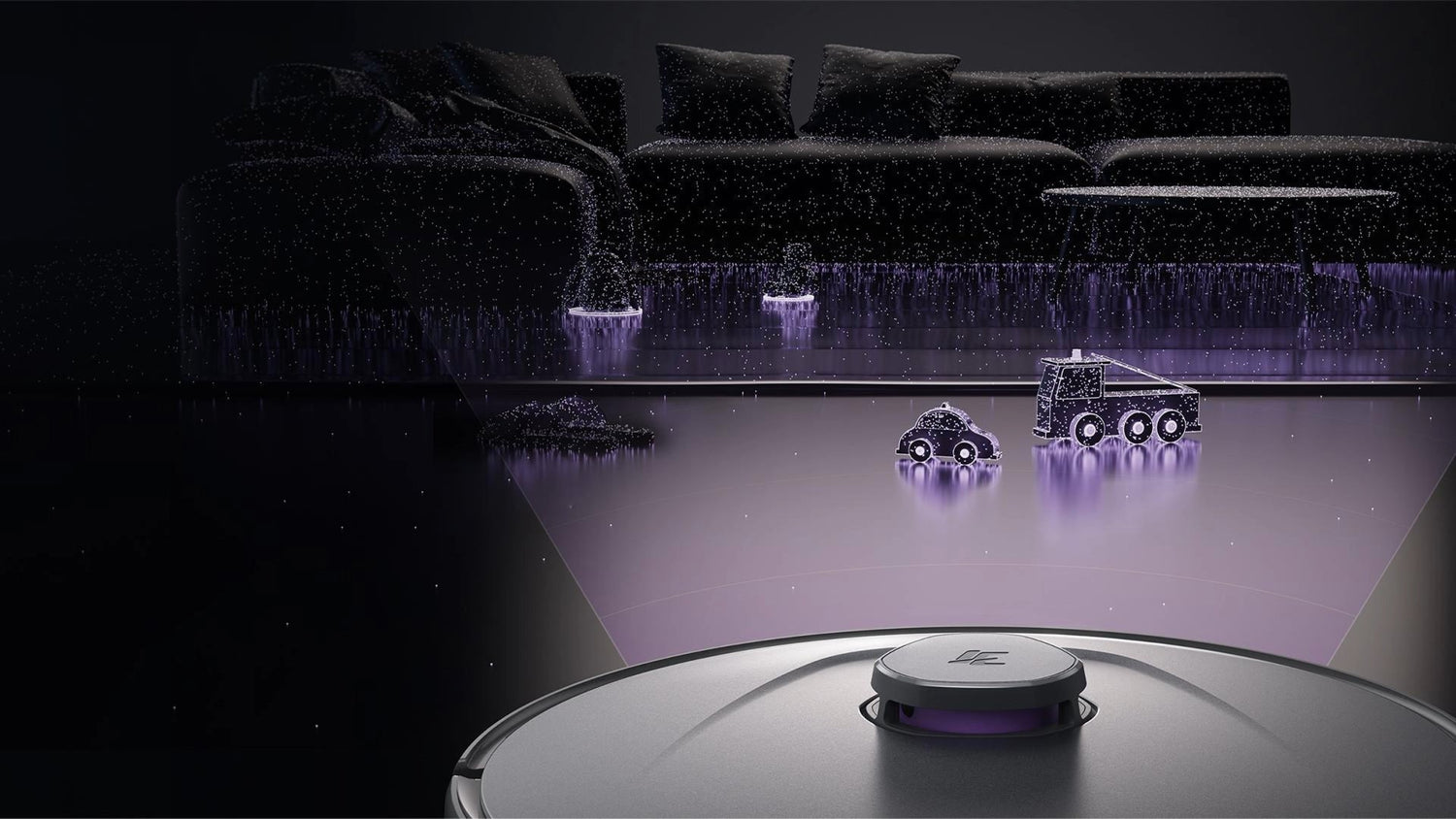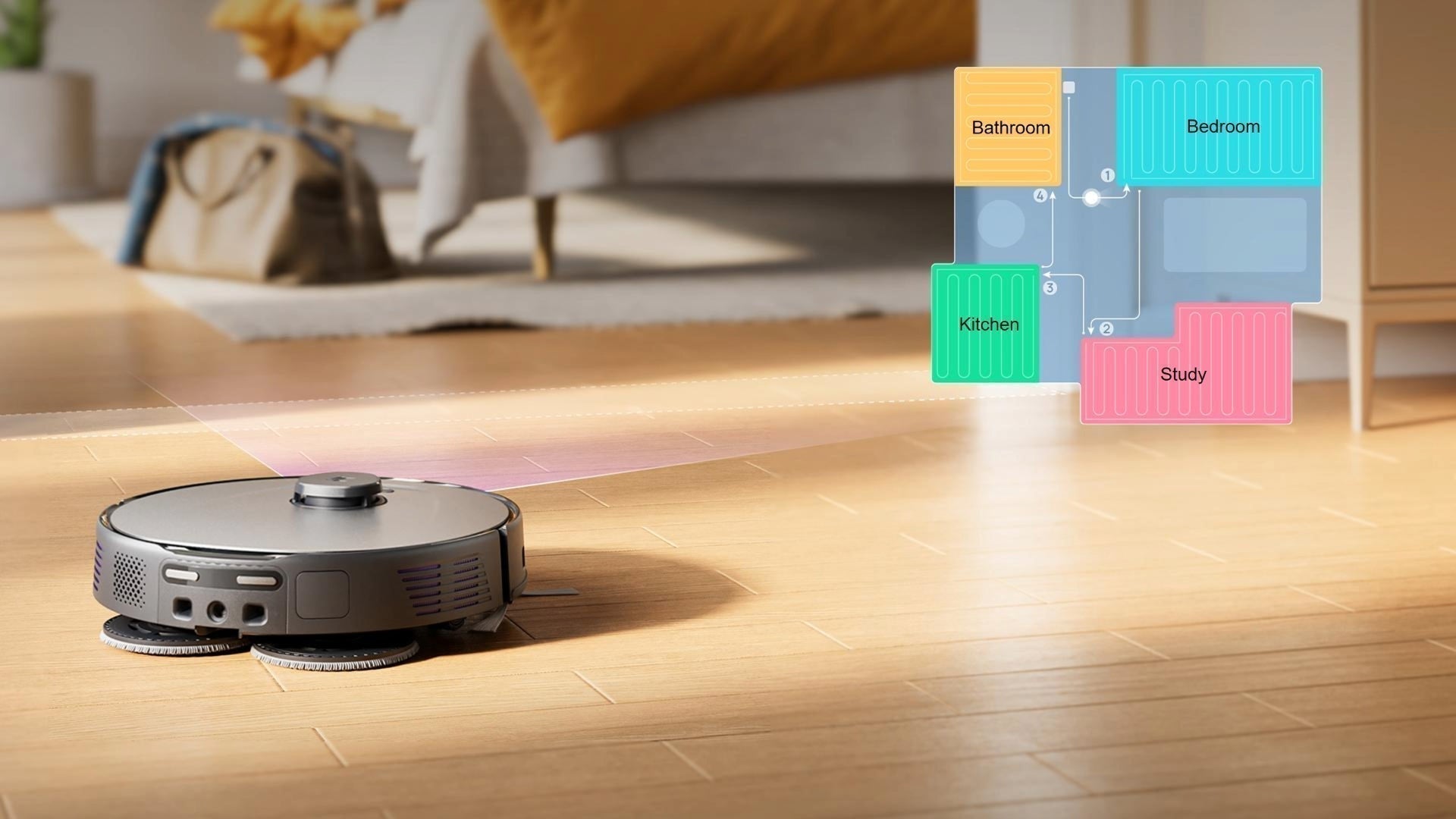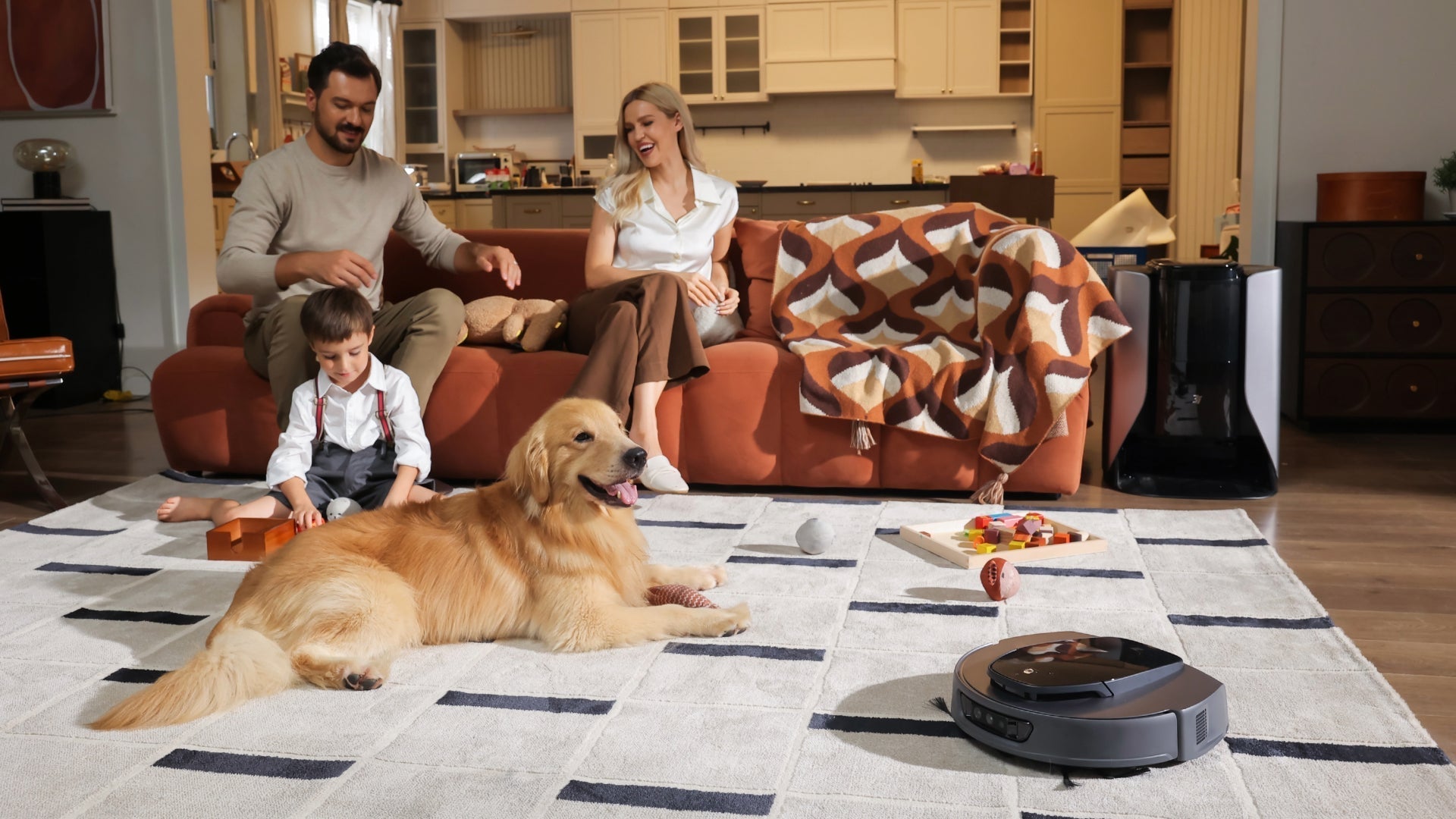Have you ever wondered how your robot vacuum cleaner seamlessly navigates around furniture, avoids pet toys, and maps your entire home without constant human guidance? The secret lies in its navigation technology—primarily either LDS LiDAR or dToF LiDAR. These sophisticated systems are the "eyes" of your robot cleaner, enabling it to understand its environment and clean efficiently.
In this blog, we'll dive deep into these two technologies, explore how they work, compare their strengths and weaknesses, and help you understand which might be better for your needs.
How LiDAR Technology Works in Robot Vacuums
LiDAR, which stands for Light Detection and Ranging, is a remote sensing method that uses light in the form of a pulsed laser to measure variable distances to an object. These light pulses—combined with other data recorded by the system—generate precise, three-dimensional information about the shape of the object and its surface characteristics.
In the context of robot vacuums, LiDAR technology is crucial for simultaneous localization and mapping (SLAM). SLAM algorithms allow the robot to construct a map of an unknown environment while simultaneously tracking its location within that map. This is why modern robot vacuums can clean methodically rather than just bouncing randomly around your room.
There are different implementations of LiDAR technology in consumer robot vacuums, with LDS LiDAR and dToF LiDAR being two prominent approaches in the robot vacuum market.
What is LDS LiDAR?

LDS (Laser Distance Sensor) LiDAR is currently the more widespread navigation technology in robot vacuums. It mainly works through triangulation measurement with a rotating laser component.
How LDS LiDAR Works
- A laser diode emits laser beams in multiple directions through a rotating module.
- These beams hit obstacles and objects in the environment and reflect back to the sensor.
- The system uses triangulation to determine distances.
- By repeating this process thousands of times per second while moving, the robot builds a detailed map of its surroundings.
Characteristics of LDS LiDAR
- Mechanical Rotation: LDS LiDAR relies on a physically rotating component to emit laser beams in all directions, which allows for 360-degree scanning.
- Established Technology: It's a more mature technology that has been widely adopted in mid-to-high-end robot vacuums.
- Physical Profile: Due to the rotating mechanism, LDS LiDAR modules typically require a protrusion on top of the robot vacuum, which can increase the overall height of the device.
What is dToF LiDAR?

dToF (direct Time-of-Flight) LiDAR is a more recent advancement in sensing technology that's gaining traction in premium robot vacuum models. Unlike LDS, dToF measures the exact time it takes for a laser pulse to travel to an object and back to the sensor.
How dToF LiDAR Works
- The system emits short pulses of laser light across a wide area.
- A specialized sensor measures the precise time it takes for each pulse to bounce back from objects in the environment.
- Using the constant speed of light, the system calculates distances directly from the flight time of these pulses.
- This process happens extremely quickly, creating a detailed depth map of the surroundings.
Characteristics of dToF LiDAR
- Solid-State Design: Many dToF systems are solid-state or semi-solid-state (using Micro-Electro-Mechanical Systems, or MEMS mirrors), meaning they have fewer or no moving parts compared to LDS systems.
- Higher Accuracy and Range: dToF typically offers higher measurement precision (potentially down to millimeter level), a longer detection range, and maintains accuracy better over distance.
- Compact Profile: Without bulky rotating parts, dToF modules can be made more compact and flat, allowing for lower overall height of the robot vacuum. This enables cleaning under low furniture.
LDS LiDAR vs. dToF LiDAR: A Detailed Comparison
The following table summarizes the key differences between these two technologies:
|
Feature |
LDS LiDAR |
dToF LiDAR |
|
Technology |
Uses a rotating laser module, often based on triangulation measurement |
Measures the direct flight time of laser pulses to calculate distances |
|
Scanning Method |
Mechanical rotation for 360° scanning |
Often solid-state or semi-solid-state with little to no mechanical movement |
|
Accuracy & Range |
High accuracy (centimeter-level), but may decrease over longer distances |
Higher accuracy (millimeter-level), longer range, and maintains accuracy better over distance |
|
Response Speed |
Fast |
Extremely fast due to direct time measurement |
|
Environmental Adaptability |
Performs well in most home environments, but may struggle with highly reflective surfaces (e.g., glass doors, mirrors) and strong light interference |
Better resistance to ambient light interference (e.g., sunlight) and can more accurately detect transparent and highly reflective objects |
|
Cost |
More cost-effective due to mature technology and mass production |
Generally higher cost due to advanced components (e.g., SPAD sensors, TDCs) |
|
Power Consumption |
Higher power consumption due to the continuously rotating mechanical parts |
Lower power consumption with no moving parts, leading to longer battery life |
|
Size & Reliability |
Typically requires a protrusion on the robot's body; mechanical parts may be prone to wear over time |
Enables slimmer, flatter designs (can be integrated flush); solid-state design often offers higher reliability and durability |
|
Example Products |
Many models from Roborock (e.g., S series variants), Xiaomi, Ecovacs (lower-end models), 3i P10 Ultra |
Roborock Saros 10R (3D ToF), Ecovacs high-end models (e.g., X series), 3i S10 Ultra and G10+ |
FAQ: Common Questions About LDS and dToF LiDAR
Q: Which technology is better for robot vacuums?
A: There's no definitive "better" technology—it depends on your priorities. LDS LiDAR offers proven performance and excellent value for money. It's a mature, reliable choice for most households. dToF LiDAR generally provides higher accuracy, better performance in challenging lighting conditions, and often enables a lower-profile robot that can clean under low furniture. However, it typically comes at a higher cost.
Q: Can these technologies see colors or recognize specific objects?
A: No, both LDS and dToF LiDAR are primarily distance-measuring technologies. They create point clouds or depth maps by measuring the time it takes for light to return, but they do not capture color information or inherently recognize objects like a camera does. However, many advanced robot vacuums fuse LiDAR data with input from cameras (for visual recognition) and other sensors to better identify specific obstacles like shoes, cables, or pet waste.
Q: How well do they work in complete darkness?
A: Both LDS and dToF LiDAR work excellently in complete darkness since they rely on their own emitted laser light for perception, not ambient light. This is a significant advantage over vision-based navigation systems, which can struggle in low-light conditions.
Q: Which technology is more future-proof?
A: dToF represents a newer trend in consumer technology and aligns with the industry's move towards solid-state solutions (with no moving parts), which can offer increased reliability and compactness. Furthermore, its inherent advantages in range, accuracy, and light resistance are beneficial. However, LDS is a highly mature and cost-effective technology that will likely remain relevant and effective in the mid-range market for years to come. Innovations might also focus on sensor fusion—combining the strengths of different technologies, like dToF for navigation and dedicated AI cameras for obstacle recognition.
Q: Do I need to clean these sensors?
A: Yes, periodic gentle cleaning is recommended for both types of sensors. For LDS LiDAR, the rotating module on top can collect dust and should be wiped clean with a soft, dry cloth. For dToF sensors, the window covering the solid-state emitter and receiver should be kept clean from smudges, dust, or debris that could potentially interfere with measurements. Always refer to your specific robot vacuum's manual for cleaning instructions.
Conclusion
Both LDS LiDAR and dToF LiDAR are impressive technologies that have revolutionized how robot vacuums navigate our homes. LDS LiDAR offers a cost-effective, reliable, and proven solution that has successfully powered a generation of smart robot vacuums. dToF LiDAR represents a more advanced approach with potential advantages in accuracy, range, form factor, and adaptability to challenging conditions, often found in premium models.
The choice between them isn't always straightforward. When selecting a robot vacuum, consider factors like your budget, home layout (especially the amount of low furniture), the presence of challenging surfaces like glass or mirrors, and the importance of cutting-edge features.
Ultimately, the best technology is the one that reliably helps your robot vacuum keep your home clean with minimal intervention. As technology continues to evolve, we can expect these systems to become even more accurate, efficient, and integrated into smarter home ecosystems.
Read more to learn how robot vacuums map, navigate, and avoid obstacles.




